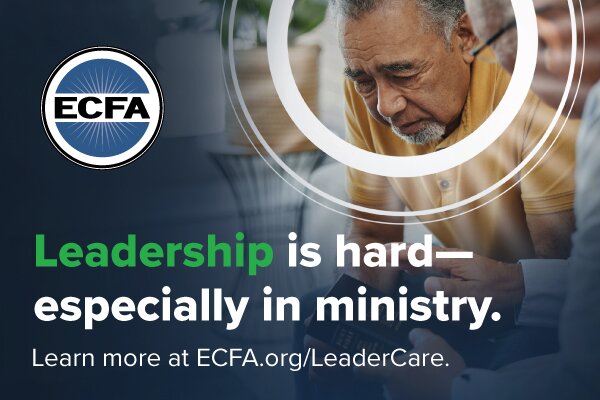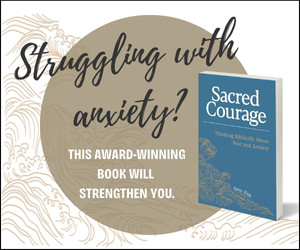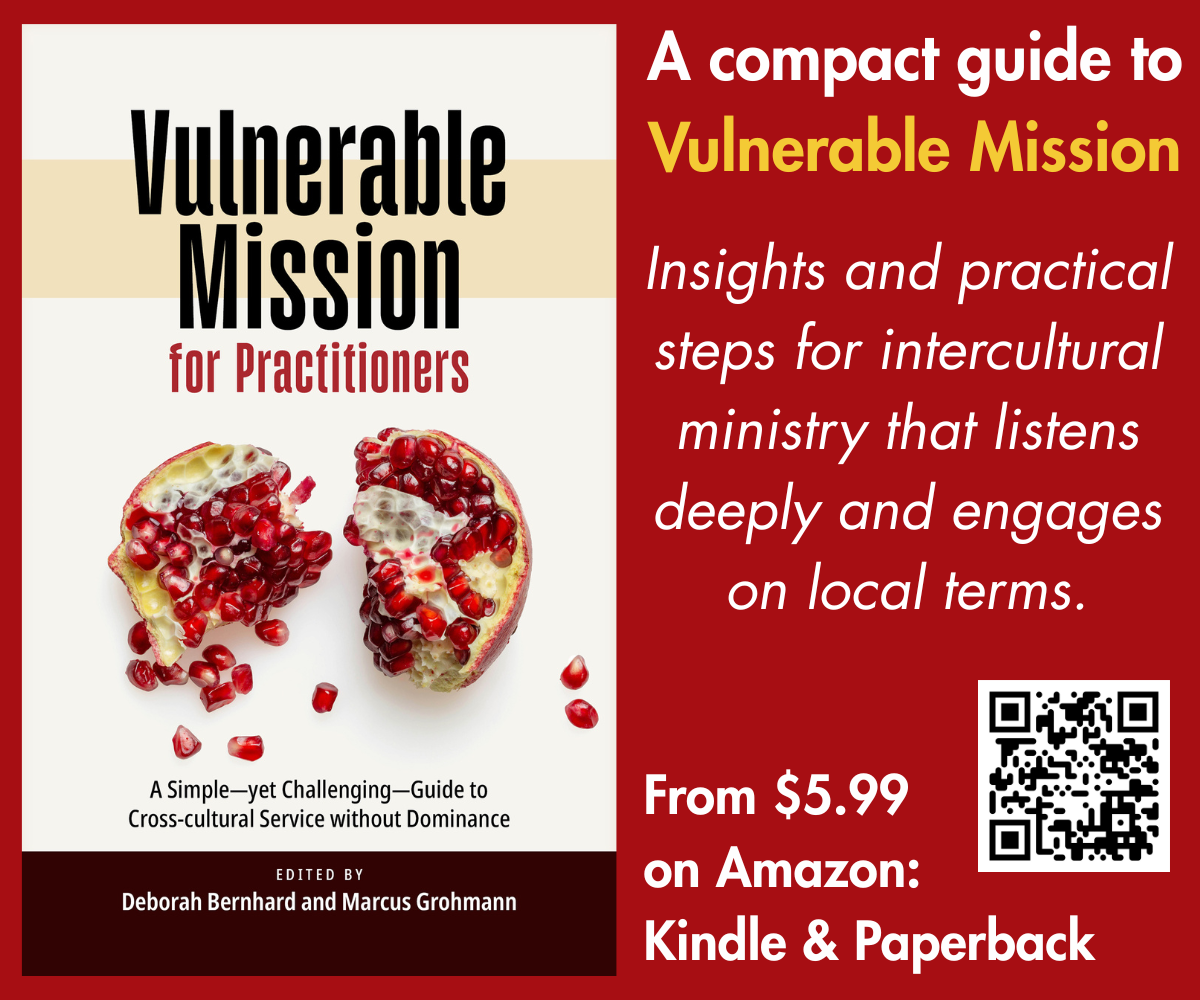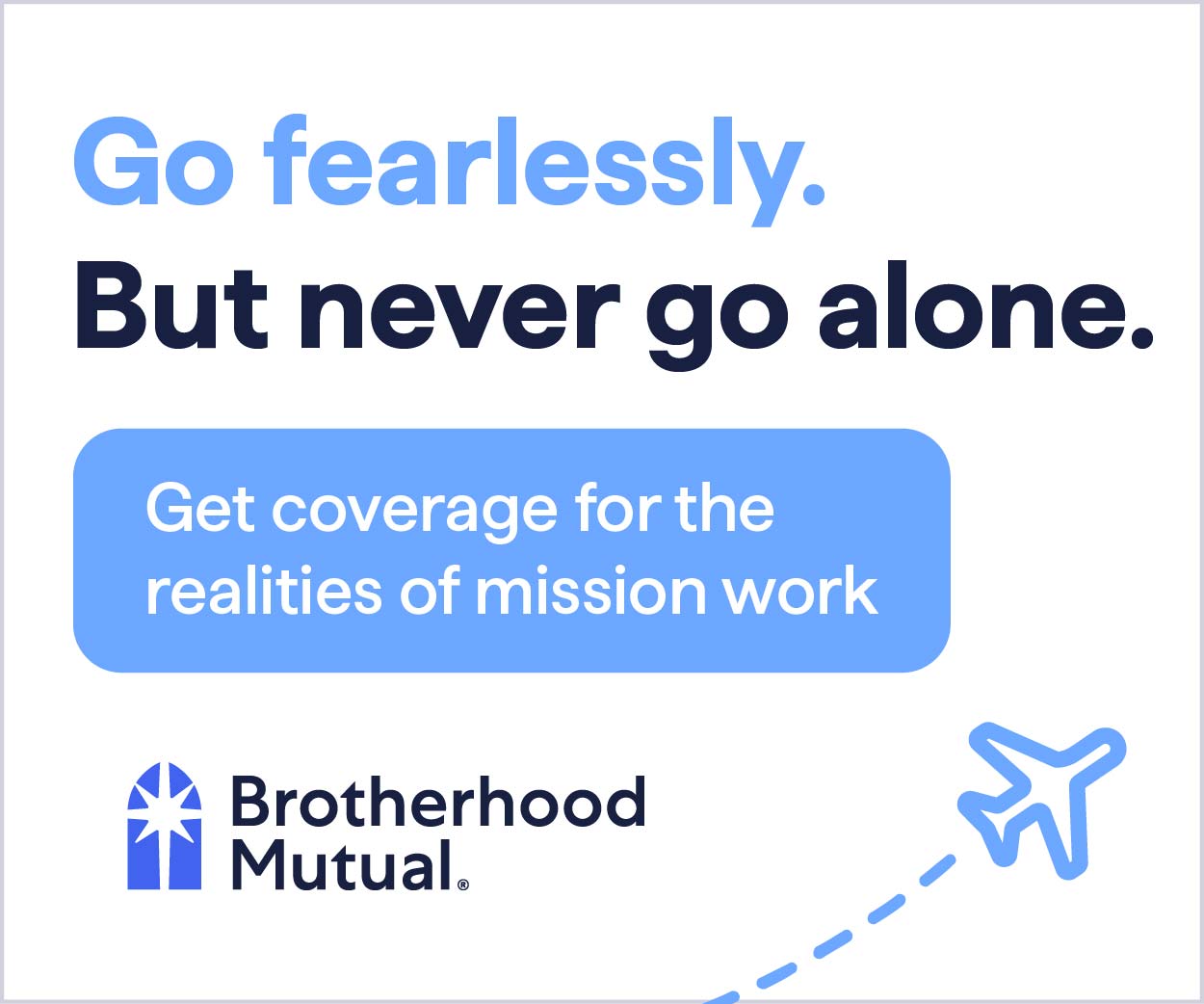EMQ » Jan – March 2025 » Volume 61 Issue 1

Art, Faith, and Science
Summary: When my daughter was diagnosed with a rare genetic disorder around a decade ago, my life changed radically. An abrupt introduction to the demanding world of caregiving disrupted art making and ministry as I had previously known it. However, I eventually discovered that this environment I now found myself in was an unanticipated source of inspiration.
By Geinene Carson
Consider the juxtaposition: art’s fluidity, science’s precision, faith’s conviction.
The perceived rigidity of scientific inquiry is often seen in contrast to what appears to be unpredictable chaos in art and naivete in faith. Not everyone grasps art, just as not everyone fully comprehends science or a life of faithful devotion. Yet, by engaging these three simultaneously, I have discovered common threads weaving a tighter understanding of this world and my place in it.
While science dissects function, art explores the depths of aesthetics and emotion. Within this tension lies a unique synergy. Artists and scientists, alike, stumble into moments of awe during their experimentation and observation, while faith founds itself on “reverential respect mixed with fear or wonder.”[i]
My Personal Experience
As a visual artist, my creative journey unexpectedly veered into the scientific realm, out of necessity. Around a decade ago, our daughter was diagnosed with Phelan-McDermid Syndrome, also known as 22q13. This raregenetic disorder is caused by deletions or rearrangements on the q terminal end (long arm) of chromosome 22.
The years prior to diagnosis were lived in uncertainty, navigating the mystery and medical complexity of an abnormal MRI scan revealing a thin corpus callosum and loss of white matter. This devastating result along with the realities of our daughter’s developmental challenges, limited mobility, and speech absence led to countless hospital visits and hours of therapies.
In earnest pursuit of understanding our child’s condition and providing support, I delved into the study of the brain, neurons, and neuroplasticity – the remarkable ability of the brain to rewire itself around inflicted damage. It all began by googling terms and scouring an abundance of neuro-imagery. I craved vital information about brain development and cognition, never expecting to encounter such intrigue in its intricate and beautiful construction nor its proof of the restoration and renewal hard wired in our physical bodies.
A Revelation
An abrupt introduction to the demanding world of caregiving disrupted art making and ministry as I had previously known it. My life had become overwhelmed by frequent hospital visits, therapy regimens, medical jargon and research initiatives. After a long survival season, I realized this environment I now found myself in was either an obstacle to my art making or an unanticipated source of inspiration.
Prayerfully choosing the latter, I allowed my curiosity about our innerworkings to drive further research. I observed the elaborate design of cells and neurons branching into delicate structures of synapses and neural pathways. The deeper my search, the more my fasciation grew, as well as the need to create art in response. This content became increasingly valuable, not only in reference to my daughter’s healing but also my own.
The Artist’s Calling: Beyond the Visible
Art became a conduit for deeper exploration, where prayers found expression, and unexpected relationships intertwined throughout the creative process. The question that often surfaced along the way: “Do I belong here … as an artist?” This inquiry has echoed in my life within the church (local and global), mission service and most recently, upon my intersection with the scientific community.
What I learned through self-initiated scientific research was not only educating my mind, but also my faith. When medical explanations seemed elusive, each paint stroke contributed to a stronger composition of understanding and hope. Art became my prayerful language, bridging the gap between grief and faith with the journey tangibly mapped through exploratory images wrestled to canvas.
I didn’t initially plan on publicizing this growing body of work, but eventually I felt God’s leading. He reminded me that as an artist and believer, my calling should not confine me to the studio focused solely on art production. It’s about leading myself, and inviting others, to explore beyond only what is visible. God provoked me to consider the value of engaging and stewarding relationships during the creative process, as much as the art.
I was compelled to share my art first with the community sharing our daughter’s syndrome. To my surprise, the 22q13 foundation purchased art prints as gifts for key researchers and supporters, one being Dr Phelan herself, the syndrome’s namesake. When I saw how much the content of my art was resonating with others and advocating, I began exploring ways to collaborate with people more intentionally.
One such endeavor involved interviewing individuals facing neurological, mental, or emotional health challenges. In response, I created art as a visual offering of encouragement. These delicate interactions, captured in my artwork, created a means to represent sensitive lived experiences in public spaces. This creative advocacy not only connected my life with individuals in their suffering, but created unforeseen in-roads to the scientific, medical and therapeutic communities.
As people encountered my art and its message in everyday places, the potential for influence grew. I discovered authentic and non-intimidating ways to address deeper life experiences with strangers – many of whom were non-Christians.
Engaging Scientists Through Visual Art: Beyond Aesthetics
Most people without in-depth knowledge of neuroanatomy or biology consider my art as non-representational, abstract. However, when I participated for the first time in a neuroscience-specific art exhibition, I encountered an audience well acquainted with the subject matter. The exhibition hall held the nations through a mixture of students, teachers, researchers, scientists and medical providers.
God revealed to me the audience I had been searching for representing a variety of ethnicities, cultures, and faiths. I was soon overwhelmed by the unexpected appreciation of my art; and almost immediately aware of my lacking depth of knowledge in the field. If my desire was to engage this brilliant and scientifically savvy population responding, it would require more intentional investment.
I wrestled with how to further coalesce the structure and facts of scientific research with artistic expression and story in an intriguing, rather than off-putting, way. Meanwhile, God continued opening doors I never imagined, nudging me into spaces I found foreign and intimidating. Each interaction strategically expanded my understanding of how to interact more confidently with this niche audience and contribute uniquely as an artist and a believer.
Doing the Research
To seek out a place for my art and advocacy among the scientific community, I spent a year researching and pursuing opportunities for sharing my body of accumulated work. God was gently challenging my boldness to show up in unusual places. This began my exhibits at large scientific forums in the US and abroad.
Even without possessing a doctorate or any other obvious credentials, I was pleasantly surprised by the warm reception extended to me and my art. Many I encountered at these professional venues found my artwork oddly interesting, which led to deeper conversations about the inspiration and personal journey behind it.
Conducting my own in-person survey, I further probed the question, “Do I belong here… as a traditional artist?” Most, if not all, answered positively to my query, affirming, “Of course you do, you are curious like us and we all have all started there.”
An English neuroscientist told me, “Yes, there is indeed a place for you! … What your art is doing is reminding us why we do what we do, because in the day to day we can forget… In fact, we need the encouragement. …so many scientists deal with depression and feelings of inadequacy, with our field having such a high suicide rate.”
This honest communication motivated me to seek additional ways of optimizing the inclusion. It took time to further develop a thoughtful approach to art uniquely suited for scientific labs, medical clinics, therapeutic practices, etc. Engaging scientists through visual art became about more than just aesthetics. Rather, it was about sparking curiosity, offering encouragement, and fostering connection.
Some of these conversations have evolved into direct collaborations – with actual lab images shared by scientists for use as art inspiration. Then these images were displayed on covers of reputable scientific journals or other presentations of published research. Whether through distant communication or recurrent intersections at events, relationships have organically developed and the level of collaboration projects matured. What first required my initiation has turned into responding to requests for partnership.
Dr Kimberly Fiock, a research scientist and neuropathology expert said, “… When Geinene approached me about this opportunity, I was thrilled to see someone outside the research community taking an interest… . One small conversation has now bloomed into an incredible partnership between science and art, and I am excited to see it expanding to include other scientists. This type of science communication is so important for getting the general public interested in the research we do and depicting what is happening at a cellular level inside our brains.”
A Lab Approved Studio Space
Exploring a stronger convergence of art and science, I envisioned the prospect of working in a studio set up inside an active research laboratory. Through observing and learning firsthand from scientists, perhaps I could more effectively translate their research efforts into tangible art. Not literal scientific illustrations, but paintings evoking an emotional dimension to their work for sharing with the public and enriching the lab environment.
This dream recently materialized through a grant-approved arts residency hosted by the scientific research division of a university abroad. After submitting my proposal, an initial video call introduced me to seven scientists who were open to collaboration. Fast forward 10 months, and I received approval to set up my studio on the first floor of the Biology, Medicine, and Health building.
Within those lab walls, I had restricted access to observe and shadow these very same scientists as they conducted experiments and explained cutting-edge research. This month-long residency culminated into an event celebrating our collaboration and exhibiting the art inspired by it. But the impact extended beyond that moment. I’ve been introduced to additional medical researchers eager to explore how art can enrich their projects and engage patients on a deeper level.
Art and Science: Beyond Sterile Illustrations
According to Raven Capone Benko, “… Art connects scientists to their own creativity and aids in their scientific process and the communication of their discoveries. By weaving together science with imagination and storytelling, art helps highlight the beauty … .”[ii]
My collaboration with scientists extends beyond mere cooperation aimed at replicating scientific illustrations. After all, there is high quality technology and AI for that now. Instead, I see my role as an artist in connecting the head and the heart, the facts with the human experience.
Beauty has just that kind of power to propel us forward into deeper research, transcending the analytical. And, as a person of faith, it’s about promoting holistic well-being. I am proposing a collaborative relationship and healthy integration of art, science and faith – a representation of loving the Lord with all of our heart, mind and soul.
As Christian psychiatrist Curt Thompson explained in his book, The Soul of Desire: Discovering the Neuroscience of Longing, Beauty, and Community, “Creating beauty, then, is a collaborative act, as is the fundamental work of the integration of the mind.”[iii]
Integration of Art and Science
My work as a visual artist engaging in relationship with scientists exemplifies how combining different fields can lead to new discoveries and innovative ways of understanding complex issues. Both artists and scientists share an insatiable curiosity, a deep inquisitiveness in life, and drive to understand and interpret the world around them. It’s this interplay of structure and innovation that drives progress in both art and science.
With keen observational skills, both look for patterns and connections, whether in nature, data, or human behavior, and use these insights to create something new and meaningful. Artists might explore patterns through visual, auditory, or performative mediums, creating works to evoke emotions and provoke thought.
Scientists, on the other hand, might use patterns to develop theories, conduct experiments, and advance understanding of the universe. Both require discernment and sensitivity to distinguish what is meant to be from what is not. This is truly beautiful and runs in parallel to faith’s appreciation of beauty as a reflection of divine truth.
“Although this may come as a surprise to people who have never studied science deeply, but in fact some of the greatest minds in science were inherently creative. This is because science is a form of creation. The purpose of science is to understand the world and create within the world. One cannot create without creativity.”[iv]
Working in closer proximity to scientists has granted me a deeper understanding of their environment and work processes. My ears have become attuned to the scientific language, and this immersion has taken on the characteristics of an anthropological study. Interestingly, I’ve realized how my background in intercultural ministry and Ethno Arts training has better equipped me for this unique immersion.
As I observe and analyze the scientific community’s activities, I ask questions to gain insight and foster fruitful engagements. Surprisingly, even the scientific world adheres to certain approaches – whether in color choices, symbol usage, or aesthetics. These collaborations have allowed me to identify shared value systems and highlight similarities in our work approaches, strengthening the connection between artists and scientists.
“Both artists and scientists are in the business of showing not just telling. Its goodness emerges as a function of being seen and experienced,” shares Thompson. [v]
Addressing the Unknown
Art, science, and faith all have angles from which to address the known and the unknown. Interaction with each of these different perspectives has allowed me to build a stronger foundation for living within the tension of life’s mysteries. While scientists seek knowledge and ask probing questions, artists investigate understanding through the enigma of creation. Both paths lead to courageous experimentation, allowing the development of deeper insights, whether through a microscope lens or a stretched canvas.
In the delicate interplay between art, science, and faith, we can discover profound connections enriching our understanding of life. Engaging with the unknown can benefit from the insights of multiple disciplines. Science embraces curiosity and uncertainty as fundamental aspects of the scientific process. The arts do as well. Faith deepens our perspective – providing a spiritual lens through which to perceive the world and find our place to steward within it.
Bridging Art and Science with Faith: A Harmonious Intersection
My interaction with scientific minds has fueled a greater hunger for knowledge alongside deeper spiritual understanding. Science builds on previous knowledge and evidence while constantly questioning and refining. This process helps scientists gradually uncover more about the unknown. Faith, on the other hand, involves trust – even when complete evidence or understanding eludes us. Yet, faith doesn’t shy away from questioning and refining. It constructs its foundation on the data found in Scripture, personal experience, and relationship.
Stepping out of my comfort zone, has challenged my faith to embrace curiosity – to explore divine mysteries without fear. What I have learned has added new insights to what I read in Scripture and refreshed opportunities to witness. This realignment has meant experiencing an authentic breakthrough in the invested areas of my life becoming less compartmentalized. Being an artist, parent, advocate, believer, minister, researcher, etc. can be beautifully integrated, complimentary rather than contradictory.
Challenging Perceptions
Over two decades ago, when setting out into missions, I encountered skepticism of art as a viable kingdom ministry – confronted with there being anything more practical I could contribute. Though I did not have any hard evidence of artists thriving in missions, I remained undeterred and stepped out to explore the opportunities myself.
Artists are often willing to venture into uncharted territories, whether experimenting with new techniques, materials, concepts, etc. This process of exploration allows them to discover new forms of expression and push the boundaries of what is known. In this process, they tap into emotions and intuition – areas not always easily articulated. By engaging with these aspects of human experience, art has the potential to reveal insights and truths otherwise hidden.[vi] Should artists then really stay only within the confines of what is considered practical?
Many view art as mere product, overlooking the life, engagement, and influence artists bring. As an artist, I have the privilege of expressing the inspiration behind my creations. Yet, the people who engage with my art bring their own associations and interpretations. It is in this middle ground that some of the most mysterious and divine connections occur – a place where practicality meets the transcendent.
Exploring the Substance of our Humanity
Interdisciplinary collaboration demystifies complex concepts and fosters a broader understanding. It encourages appreciation for investigation. The beauty of scientific inquiry, the emotional resonance of the arts, and the profound experience of genuine faith invite us to explore the substance of our humanity. This triad of curiosity gives us a glimpse of God’s multi-faceted glory from various angles, revealing new discoveries about the beauty of creation and the hope residing within it.
Generative by nature, artists contribute to society’s cultural fabric through their creativity and expression, while scientists push the boundaries of human understanding. Faith guides us to pursue meaning and purpose in all of life. Each serves as a catalyst for renewal, co-creating a more beautiful world. Integrated, they contribute to a richer understanding, contributing to the wholeness of individuals and communities – physically, emotionally and spiritually. Should the age-old question, “Do I belong here as an artist?” ever resurface,I have acquired enough God-given evidence to confidently embrace my difference and strategically carve out a unique place from which to serve the audience of his choice.

Geinene Carson (geinene.carson@om.org) has a BFA from William Carey University and has dedicated 25 years to serving with the international missions organization, Operation Mobilisation (OM, om.org). The founding director of OM’s visual arts department, she now mentors and contributes as an artist at large for Inspiro Arts Alliance. Residing in Atlanta, GA with her family, Geinene engages diverse audiences worldwide through her art, exhibitions, writing, and teaching. Learn more about her work at Geinene.com.
[i] Oxford English Dictionary, online ed., s.v. “awe,” accessed April 15, 2024, https://www.oed.com/dictionary/awe_n1?tab=meaning_and_use.
[ii] Raven Capone Benko, “Why Science Needs Art,” Smithsonian Magazine, April 15, 2020, https://www.smithsonianmag.com/blogs/national-museum-of-natural-history/2020/04/15/why-science-needs-art/.
[iii] Curt Thompson, The Soul of Desire: Discovering the Neuroscience of Longing, Beauty, and Community (Downers Grove, IL: InterVarsity Press, 2021).
[iv] Anna Powers, “Why Art is Vital to the Study of Science,” Forbes, July 31, 2020, accessed April 15, 2024, https://www.forbes.com/sites/annapowers/2020/07/31/why-art-is-vital-to-the-study-of-science/.
[v] Thompson, The Soul of Desire.
[vi] Nancy Hillis, “Creativity & Stepping Into The Unknown,” The Artist’s Journey (blog), March 14, 2020, https://www.artistsjourney.com/blog/creativity-stepping-unknown.
EMQ, Volume 61, Issue 1. Copyright © 2025 by Missio Nexus. All rights reserved. Not to be reproduced or copied in any form without written permission from Missio Nexus. Email: EMQ@MissioNexus.org.







Responses